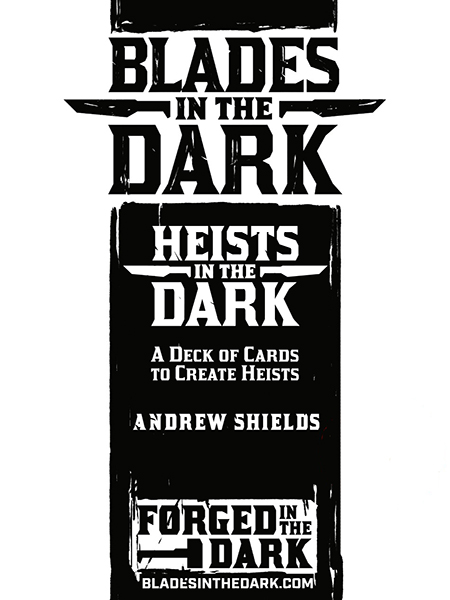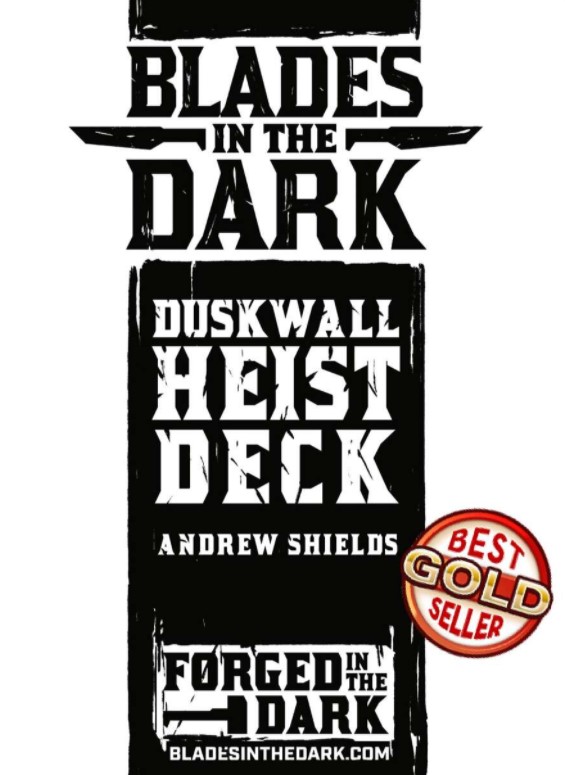 Here are some comparisons to help see what changes I made in the move between Old School Hack and Fictive Hack.
Here are some comparisons to help see what changes I made in the move between Old School Hack and Fictive Hack.
- Advancement is expected to get to the teens before you need more than the basic game.
- You can improve your talents, so if you get all 5 of your base talents and improve on average each one once, that’s 10 slots available for talents from other templates; 20th level before you hit a talent max.
- Of course, you don’t want every upgrade on every talent, so that’s where we’re likely to need the Campaign book for really successful long-running games.
- You can spend Attribute points on lots of stuff instead of Attributes, so that won’t prove to be a ceiling.
- Let’s say you hit that ceiling. You can spend a level’s worth of advancement on buying a new health level. So, that’s about level 28 before you run out of room to advance; if you get talents with lots of expansion potential, higher.
- Conclusion: Basic is all you need. The Campaign book just adds more fun. Much like Basic D&D and Advanced D&D, instead of Basic and Expert D&D.
- You can improve your talents, so if you get all 5 of your base talents and improve on average each one once, that’s 10 slots available for talents from other templates; 20th level before you hit a talent max.
- No more d12. Why not? I’m thinking of someone new to gaming sitting down at the table, and getting confused about which die to roll. (It happened in a couple of our sessions.) The game is simpler with just 1 kind of die, and I don’t think the loss of diversity outweighs the convenience.
- Armor reduces damage. I also added “Medium” armor.
- There are three kinds of talents; open, restricted, and exclusive. All talents are not created equal.
- Toned down player narrative control. Instead of spending Awesome Points to generate items and NPCs as a protected player power, now the player has to negotiate with the DM. It can still be done, but only through the DM, instead of around the DM.
- Revamped base templates. The original 7 are represented in the 15 templates in Fictive Hack, but they’ve all been heavily adapted to fit my play style better.
- Expanded range of templates. An additional 8 templates increase the options players have, without being too overwhelming in the basic game.
- Firearms. Blackpowder guns are available. And explosives!
- Some flexibility in combat has shifted around. For example, characters can spend 2 Awesome Points to strike fleeing foes, and 1 Awesome Point to change their action in the round. However, I toned down some of the more ambiguous stuff in the talents, like Exploit Weakness and the elf’s nancy “cool move” talent. I got rid of “Throw” as it was “Push” against a single target, and also opened up several combat moves to use more attributes and let the player choose which one to use. This simplifies it; “I use my [favorite attribute that applies] for impeding and pushing.”
- The original is landscape instead of portrait, with teensy tiny type (I’m guessing 6 point in some places.) And on top of that, sometimes it’s gray, so it is even harder to read. Mine is 11 point except in some tables where it drops to 10.
- System for intimidation. Because it comes up all the time.
- Changed the name of “guards” to “toughs” because that’s more accurate. Most actual guards are minions, right? It’s confusing.
- Suggested difficulty levels for tasks, instead of random difficulties.
- Characters can level individually, or if they choose to level as a table, they all pay into a pool to level instead of each character having to chip in their share.
- Overlay templates allow a character to start with two templates; so you can have a race-as-class, or race-and-class, in the same game with no conflict. Also, spellcasters can have other templates too; you can have a wizard thief, or a wizard inventor, or a wizard noble, or a wizard fighter; and this is fun for the cleric too! Cleric knight, cleric hunter, cleric musketeer, cleric scholar, cleric zealot…
- Crippling! Characters can be permanently injured by severe wounds. Perverse as this is, in my experience, it adds awesome to the game when that danger is in the background.
- Different tone. I fell in love with Old School Hack with its breezy enthusiasm. However, that’s not where I live. I bring a different tone and style, but I think my approach is also fun and awesome–just different. For a sample, check out the description of the game and what makes it distinctive and cool. Then read his version. Both valid, both awesome, very different tone.
- I drop names for levels and character concepts. Text replaces pictures for talent descriptions.
- I have an expanded concept of how to use the adventuring motives, and attach an optional Awesome Point economy to it.
- No niche protection. You could have 3 people playing clerics, and end up with 3 very different clerics. If you need niche protection, add it at the table; it should not be hard-wired in the system.
- Added “swarm” as a monster category.
- Changed the root concept with magic items.
- Greatly expanded ways the DM is counseled to put Awesome Points in the bowl.
- Expanded usefulness for shields.
- Trim, tidy, fun rules for a parrying weapon.
Anyway, that’s enough of a contrast for now. What compares? The Awesome Point economy, order and use of the combat round, attributes and their basic function, arenas and weapons, advancing in levels through spending Awesome Points. I think the games are still very near each other in many ways. I just need a different flavor for some key elements.
My thanks continues to go out to Kirin Robinson; he’s a great guy, he’s encouraged me to continue working on this, and he’s even given me permission to release hard copies of this book (as well as the free .pdfs) when it’s done. None of this madness would be possible on my end without the inspiration and chassis he built, and it is my pleasure to continue to build on it.










Most of your improvements sound great! I just had a few thoughts:
-Individual leveling or Group Leveling: I liked the idea in the original OSH where the table would level together and not individually. If a player is lagging behind in the awesome points and everyone else is capped it leads to table dynamics where the other players encourage and actively try to help that player do awesome things to get awesome points so they can all level up. The original idea I think was to promote comradeship and to work together while leveling up at the same time so nobody is left behind. Under your modifications will there be room for a gigantic level gap between players?
-I like your idea for cross-classing. I am excited to work with that and see how it balances out.
-2 awesome points to attack retreating enemies: Is this like taking and Attack of Opportunity, only paying for it?
-Crippling: I love me some permanent damage in roleplaying games, but how will you resolve permanent damage when magical healing can, if I understand it, heal most grievous wounds?
-Use of D12: I get this, I really do. But would you be open to higher levels using D12 in place of a d10? When I playtested the Shadow-Hack the D12 added a good level of random rolls in an otherwise stacked system where guns and magic could have otherwise easily injured someone.
Just some ideas and feelings. I’m excited to play.
Let’s see: yes, the 2 AP to attack a fleeing foe is like Attack of Opportunity, only it’s optional and not complex. It answers the annoyance from players and NPCs alike when people flit out of melee and vanish and you can’t catch them.
For crippling, grievous wounds are anything BUT crippling; you can be bleeding out and healed up. But the crippling is a result that indicates damage so severe that while Wounds can be restored, you’re still broken.
As for the d12, I basically decided I wanted one die to rule them, and in the darkness bind them. So it was either the d12 or the d10. I also play games that use a fistful of d10s, so they’re plentiful and handy; also, you’ve got the percentile to fall back on for big stuff like my monster generator. Frankly, I think a 10 point variance is enough. Considering it can usually be shifted by APs in addition, well… if it’s too easy for the characters to succeed, let them succeed and be cool! Then challenge them with things that have higher difficulties. I don’t feel adding more randomness beyond what I can get from a d10 is that helpful.
Shifting from one base template to another won’t be possible until the Campaign book, but you can take talents from other templates, and that’s neat.
For a discussion of my thoughts on table leveling, I went over all that here. When I pitched this idea first, Kirin thought it was neat.
Thanks for checking in!
Haven’t really tried/worked out new combat yet, but like it so far in concept.
I think I’m in favor of Highlander-style: “There can be only one!” rules regarding D10 and D12. Maybe limiting, but I’ve had to stop a couple times and try to figure out which die to use. D10 seems to work for me.
Still mulling over the wizard and cleric templates. Sounds interesting as far as combos go, but, not nearly as simple to employ.
OSH/Fictive Hack in my mind is the next level up from games like HeroQuest. Simple, engaging, well rounded games, obviously lacking in roleplaying. In general, this set of rules (FH) makes it easy to jump right in. Adding a wizard template slows that right down again.
Remember how easy it was to play a fighter in old D&D? OSH/FH has that flavor, with some talent choices, even better! And OSH has that simplicity for wizards. So my concern is this version of wizard may overly-complicate the game at this stage. Maybe better for your campaign rules instead?
Also remember, clerics and wizards can both be played as a single template. They don’t have to be combined–but if you’re comfortable with the base level, you can add overlay complexity if that’s the flavor you want. Same as the races.
Playing with a single template, you get a talent at first and second level, and only spend 12 Awesome Points to level instead of 15. Not so if you have an overlay template. So, I disagree it’s a lot more complex to play a cleric or wizard. It can be–but it doesn’t have to be.
Now, the grimores and canticles are reserved for the campaign book. THOSE will slow it down for newbies.
Pingback: Links of the Week: July 12, 2012 | Keith Davies — In My Campaign - Keith's thoughts on RPG design and play.